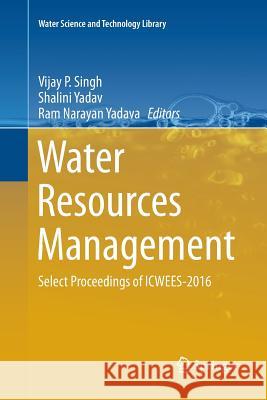Water Resources Management: Select Proceedings of Icwees-2016 » książka



Water Resources Management: Select Proceedings of Icwees-2016
ISBN-13: 9789811354694 / Angielski / Miękka / 2019 / 349 str.
Water Resources Management: Select Proceedings of Icwees-2016
ISBN-13: 9789811354694 / Angielski / Miękka / 2019 / 349 str.
(netto: 575,06 VAT: 5%)
Najniższa cena z 30 dni: 578,30
ok. 22 dni roboczych
Dostawa w 2026 r.
Darmowa dostawa!
1. Soil Fertility Status of Bhilwara District of Rajasthan, by K.L. Gurjer.- 2. Identification of Farming Systems in Tribal Region of Zone IV-B of Rajasthan (India), by P.S. Rao.- 3. Energy Assessment of Rice Under Conventional and Drip Irrigation Systems, by K.V.R.Rao.- 4. Response of Okra Under Microsprinkler and Surface Methods of Irrigation, by S.P. Gupta.- 5. Development of Universal Ultimate Total Green Chemistry and Eco-Agriculture or Sustainable Productivity, by R.C.Yadav.- 6. Landscape Gardening and Environmental Restoration: Concerns in Mughal Kashmir, by Mumtaz Ahmad Numani.- 7. Eco-Treatment Zone in Open Drain by Sayali Joshi.- 8. Water Crisis: Issues and Challenges in Punjab, by Ravishankar Kumar.- 9. Issues and Challenges of River Health Assessment in India, by M L Kansal.- 10. Coastal Reservoir-How to Develop Freshwater from the Sea Without Desalination, by Shu-Qing Yang.- 11. Leakage Detection Studies for Water Supply Systems-A Review by Darsana P.- 12. Quantification of Water Footprint of National Capital Territory (NCT) of Delhi, India, by Deepa Chalisgaonkar.- 13. Salt Water Intrusion and Water Security Issues of Coastal Community: Case of Thane District (Maharashtra), by M.D. Omprakash.- 14. Study of Suction Vs Water Content of Soil of Turamdih Area Mixed with Bentonite and its implication on the Liner Property of Tailing Dam: A Case Study from East Singhbhum Jharkhand, Eastern India by Sahendra Singh.- 15.Long Term Water Planning: A Review of Kenya National Water Master Plan, by J. Kibiiy.- 16. Integrated Water Management at Local Government level for Southern Africa, by J.A. du Plessis.- 17. Integrated Water Resources Management in Malaysi: Some Initiatives at the asin Level, by Rahmah Elfithri.- 18. A Mechanical System for Lake Environment Management, by S.M. Mathur.- 19. Wetland Characterization and Implications on Agriculture in L. Victoria Basin, by J.R. Kosgei.- 20. Costal Land Use/ Land Cover and Shoreline Studies for Dakshina Kannada Coast, Karnataka, India by Shabnum Suhura.- 21. Management of Coalbed Methane and Coal Mine Produced Water for Beneficial Use in Damodar Basin of India, by Vinod Atmaram Mendhe.- 22. Water Supply-Demand Assessment in Ur River Watershed in Tikamgarh District, by Goyal, V. C.- 23. Analysis Of Spring Discharge In The Lesser Himalaya: A Case Study Of Mathamali Spring, Aglar Watershed, Uttrakhand, by Vikram Kumar.- 24. Submerged Geotextile Sand Containers For Coastal Defence, by Kiran G. Shirlal.
This book contains two parts. The first part deals with some aspects of irrigation, encompassing farm irrigation systems, landscape gardening, energy assessment for drip irrigation, and micro-sprinklers. The second part is on water resources planning and management. It discusses water crisis, challenges in river health management, water supply systems, salt water intrusion, lake management, water supply demand assessment, integrated water resources management, among other topics. The book will be of interest to researchers and practitioners in the field of water resources, hydrology, environmental resources, agricultural engineering, watershed management, earth sciences, as well as those engaged in natural resources planning and management. Graduate students and those wishing to conduct further research in water and environment and their development and management may find the book to be of value.
1997-2025 DolnySlask.com Agencja Internetowa
KrainaKsiazek.PL - Księgarnia Internetowa









